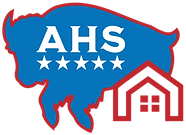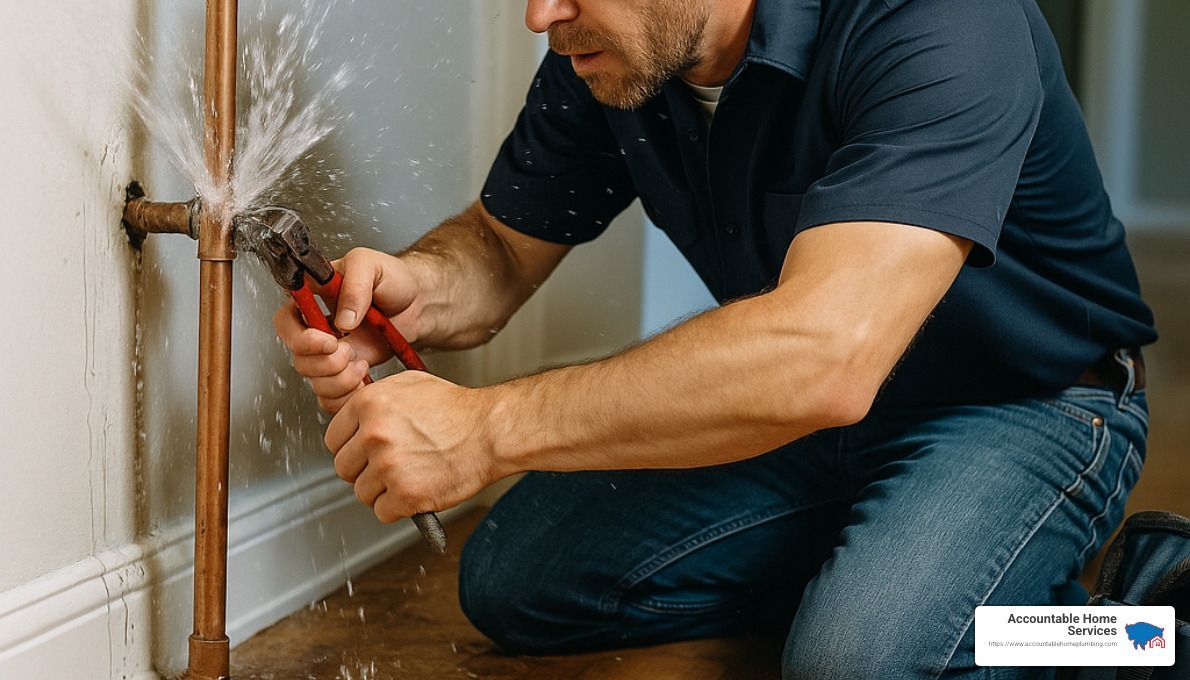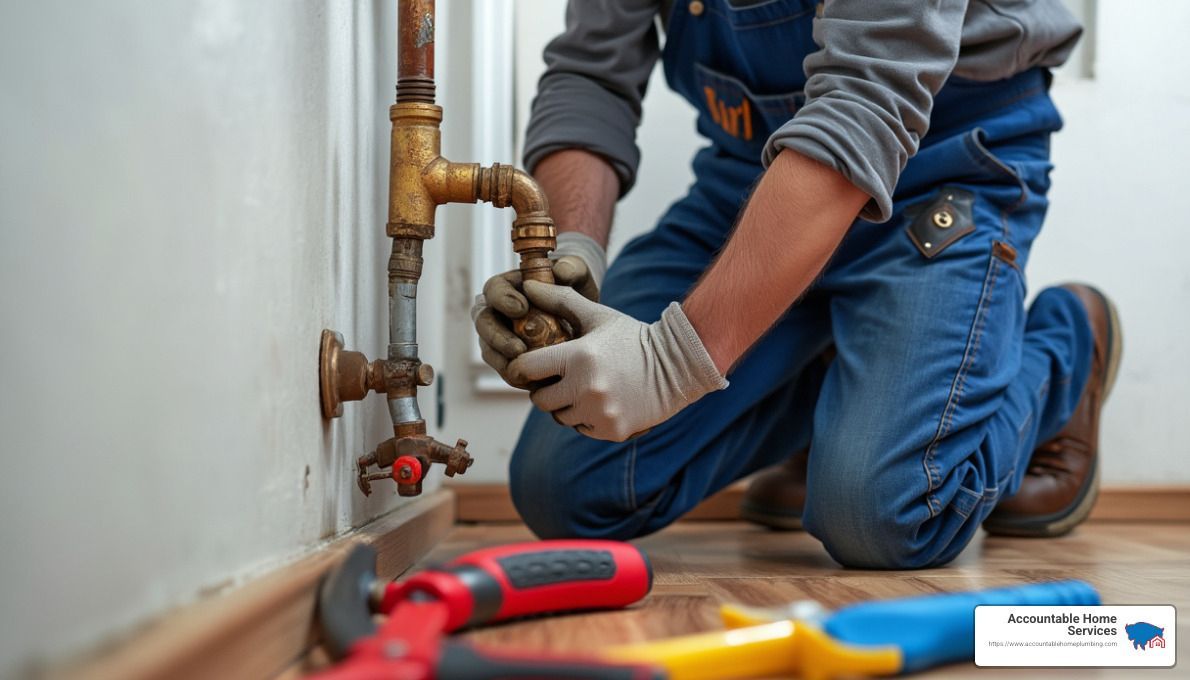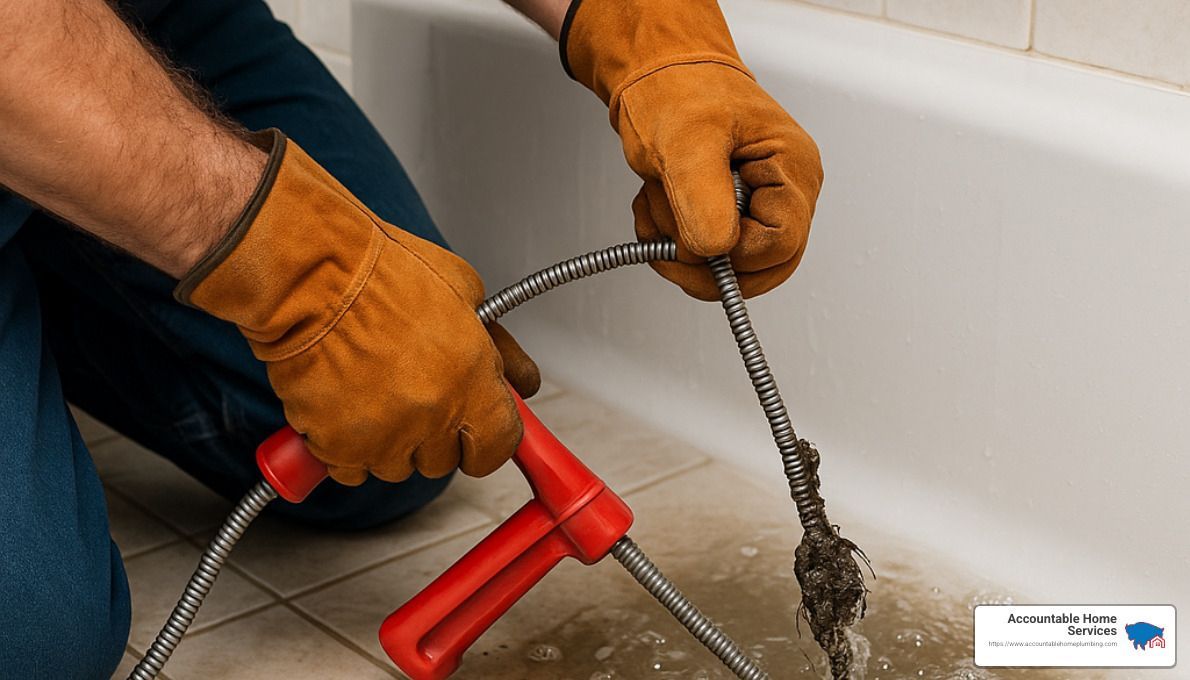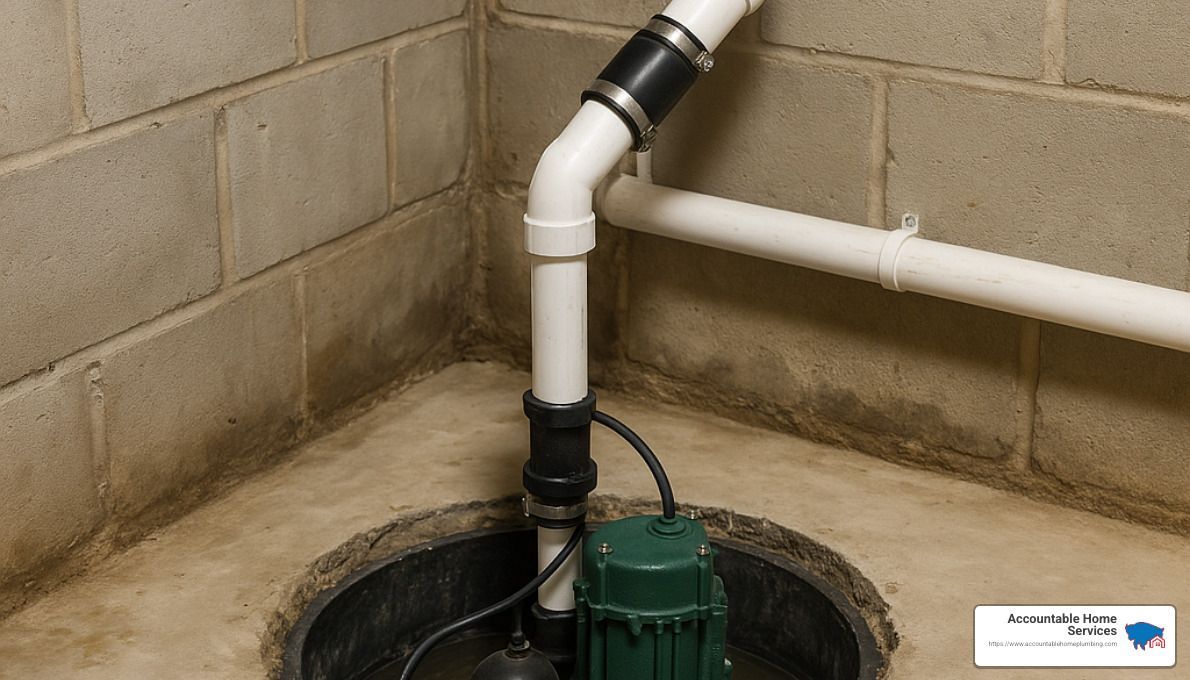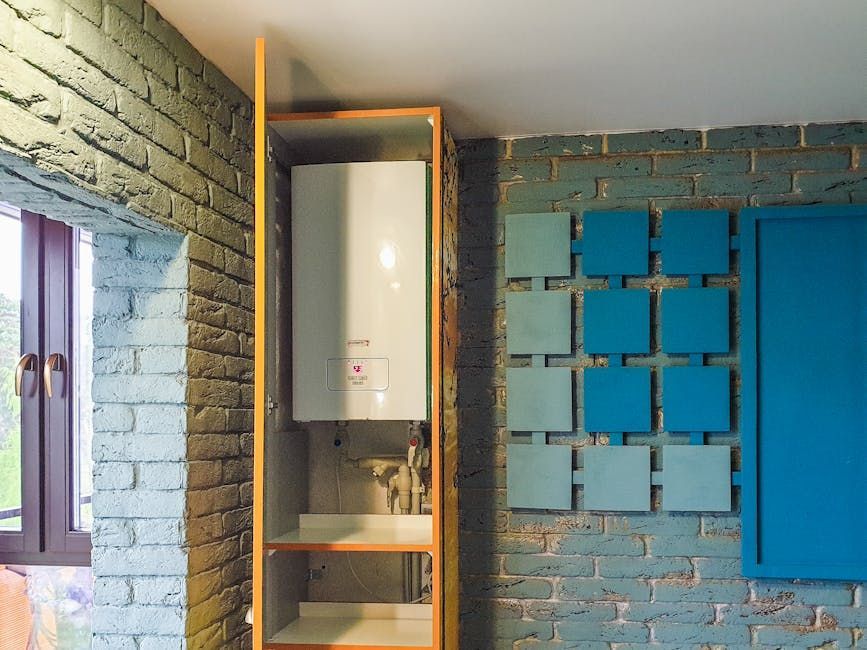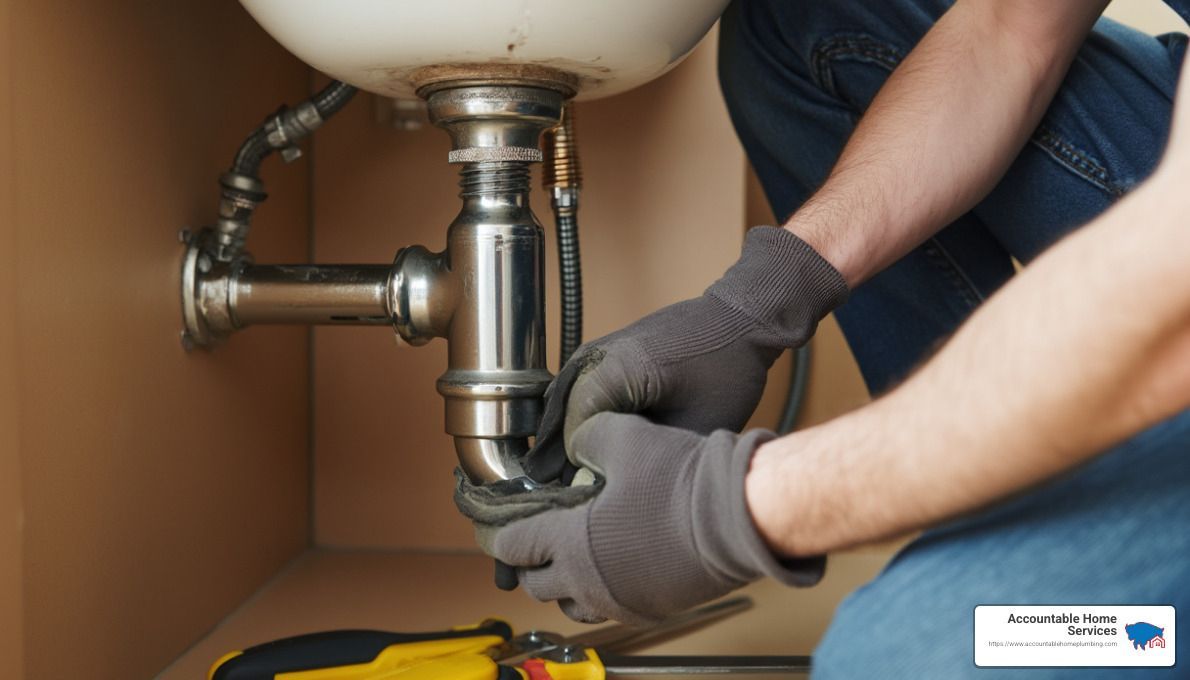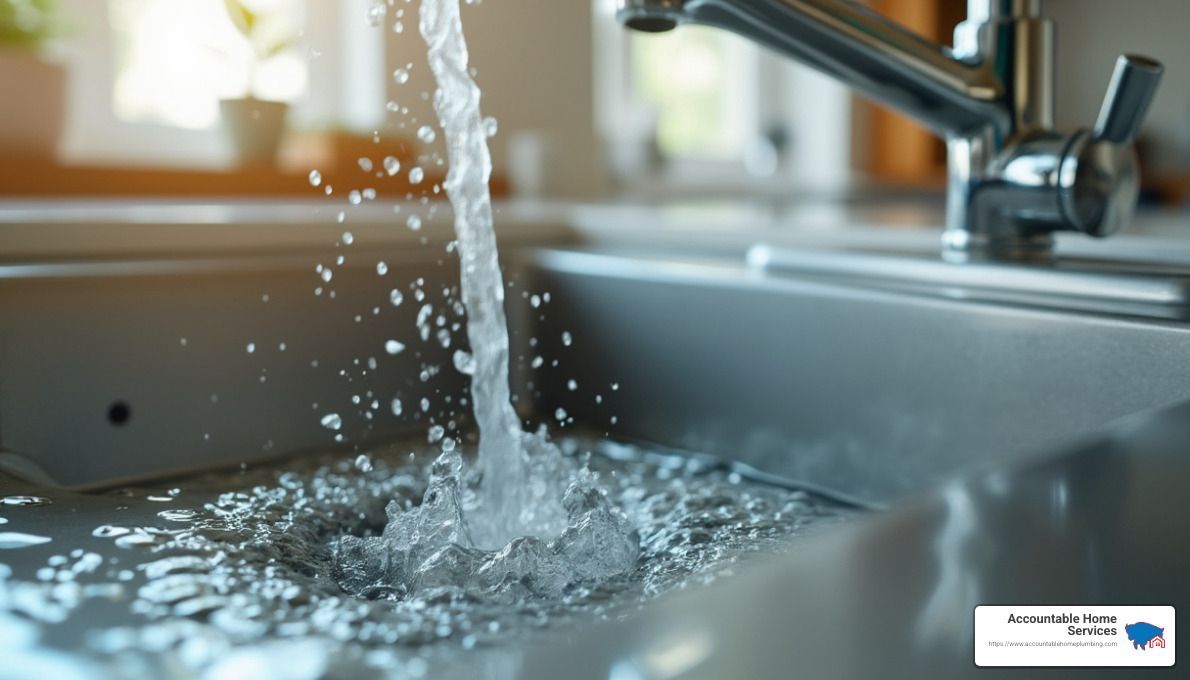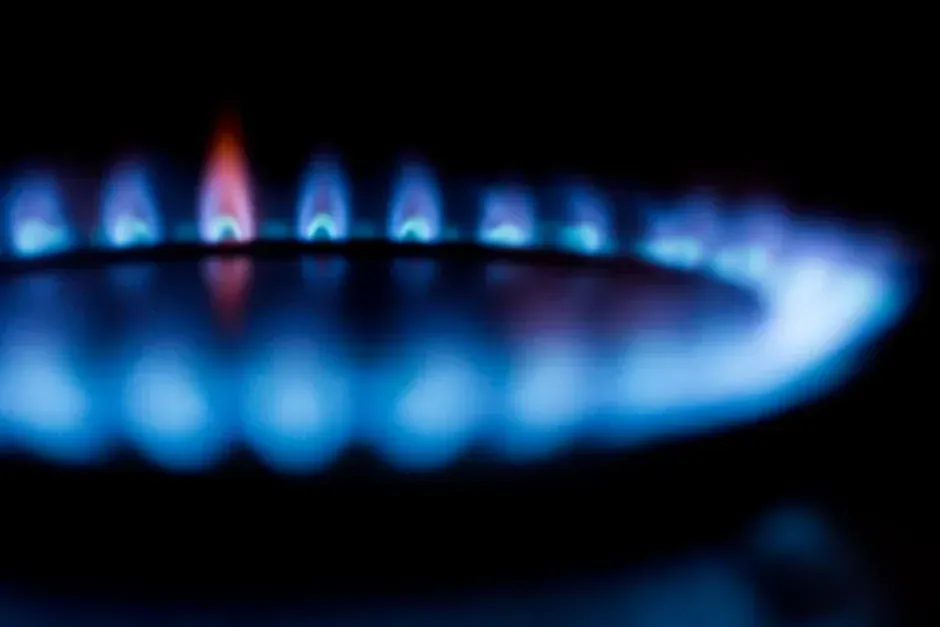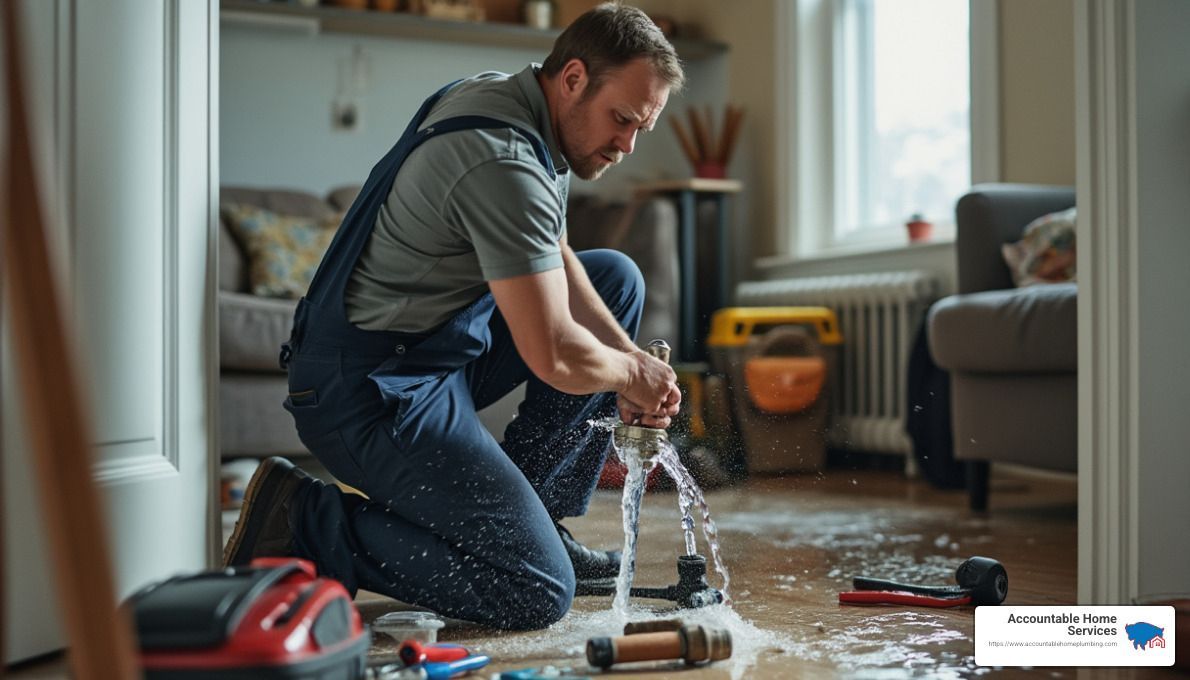Plumbing Maintenance Checklist: Don't Let Your Pipes Burst Your Bubble
Why Regular Plumbing Maintenance Saves You Money and Headaches
Here's a quick plumbing maintenance checklist for homeowners who want to prevent costly repairs in 2025:
- Check for leaks monthly (faucets, toilets, under sinks)
- Test water pressure (ideal range: 40-60 psi)
- Clean drains naturally with baking soda and vinegar
- Flush water heater annually to remove sediment
- Inspect toilet components for proper functioning
- Examine exposed pipes for corrosion or damage
- Test sump pump before rainy seasons
- Clean gutters and downspouts seasonally
- Schedule professional inspection every 1-2 years
A comprehensive plumbing maintenance checklist is essential for keeping your home's water systems running smoothly in 2025. When ignored, even small issues can lead to major problems - a single dripping faucet can waste up to 34 gallons of water per year, and nationwide, small leaks waste up to 1 trillion gallons annually.
Regular maintenance not only prevents these costly issues but also extends the lifespan of your plumbing system. As Benjamin Franklin wisely noted, "An ounce of prevention is worth a pound of cure" - and nowhere is this more true than with your home's plumbing.
Think about it: your home's plumbing system represents about 15% of your property's total value. That's a significant investment worth protecting through regular care and attention.
I'm Mike Martinez, owner of Accountable Home Plumbing and a Denver native with years of experience helping homeowners implement effective plumbing maintenance checklists to prevent emergencies and costly repairs. Through my work, I've seen how simple preventative measures can save homeowners thousands in emergency repair costs.
1. Regular Leak Inspection: A Key Step in Your Plumbing Maintenance Checklist
Ever heard that quiet drip from your bathroom faucet at night? It might seem harmless, but those tiny drops add up to a surprising amount of waste. Small leaks are the silent thieves of your water bill – and they're more common than you might think.
The numbers are eye-opening: according to the Environmental Protection Agency's 2025 water conservation report, household leaks across America waste up to 1 trillion gallons of water each year. That's not just an environmental concern – it's money literally going down your drain!
Here in Denver, where water conservation matters to all of us, keeping up with a plumbing maintenance checklist that includes regular leak inspections isn't just responsible – it's essential. At Accountable Home Plumbing, we've seen how catching a small leak early can save homeowners from expensive emergency repairs down the road.
We recommend checking for leaks at least once a month. Take a few minutes to inspect visible pipes, faucets, and fixtures throughout your home. Pay special attention to the usual suspects – under sinks, around toilet bases, and behind appliances connected to water lines.
What should raise red flags? Water stains appearing on walls or ceilings, musty odors in certain areas, unexplained increases in your water bill, or the sound of running water when everything's turned off. Even a small reduction in water pressure might indicate a leak somewhere in your system.
To put it in perspective, a leaking hose with just a dime-sized opening can waste over 6,000 gallons of water in a single month! That's enough to fill a small swimming pool – all while hiking up your water bill.
How to Spot Hidden Leaks in Your Plumbing Maintenance Checklist
Not all leaks are kind enough to show themselves with obvious puddles. Many hide behind walls, under floors, or in other sneaky places. Here's how you can play detective as part of your plumbing maintenance checklist:
Your water meter is your best ally in this detective work. Turn off all water-using appliances and fixtures, check your meter's reading, then wait about two hours without using any water. If the reading changes when nothing should be running, you've likely got a leak somewhere in your system.
Don't forget to check under sinks regularly. A quick peek with a flashlight can reveal moisture or early signs of leaks before they become major problems. While you're at it, run your hand along exposed pipes to feel for moisture that might not be visible.
Listen carefully when your house is quiet – sometimes you can hear the faint sound of water dripping or running when it shouldn't be. This is especially true at night when there are fewer competing noises.
Watch for water stains on walls, ceilings, or floors – they're like neon signs pointing to hidden moisture problems. Similarly, any sudden mold or mildew growth suggests excess moisture that could be coming from a leak.
As one plumbing expert wisely notes, "It only takes 4,000 drips to waste one liter of water." That might not sound like much, but when you realize that one drip per minute adds up to about 1,440 drips daily and 34 gallons annually, it puts things in perspective.
For our neighbors in Denver, Westminster, Thornton, and surrounding areas, our team at Accountable Home Plumbing can perform professional leak detection using specialized equipment that's been updated for 2025. We can locate even the most elusive leaks without tearing up your walls or floors – saving you both water and worry.
Making regular leak inspections part of your plumbing maintenance checklist isn't just about preventing waste – it's about protecting your home and your wallet. A few minutes of attention today can prevent hours of headaches tomorrow.
2. Test Water Pressure to Prevent Future Problems
Water pressure is a bit like Goldilocks – it needs to be just right. Too low, and you'll be standing under a sad trickle of water in the shower. Too high, and you're putting your entire plumbing system at risk. That's why checking your water pressure deserves a prominent spot on your plumbing maintenance checklist.
For most homes, the sweet spot for water pressure falls between 40 and 60 psi (pounds per square inch). When pressure creeps above 80 psi, it's like your pipes are constantly under stress – imagine trying to hold your breath while someone sits on your chest! Over time, this excessive pressure can lead to leaks, damaged fixtures, and even catastrophic pipe failures.
Testing your water pressure is surprisingly simple. You'll need an inexpensive pressure gauge (available at any hardware store for about $10) that attaches to an outdoor spigot. Just make sure no water is running anywhere in your home, attach the gauge to the faucet, turn it on fully, and check the reading. It's a two-minute task that could save you thousands in repairs.
If your reading is above 60 psi, it might be time to install a pressure regulator or have your existing one checked. On the flip side, if you're getting below 40 psi, you might have partially closed valves, pipe obstructions, or issues with your municipal water supply.
Understanding the Role of Water Pressure in Your Plumbing System
Think of water pressure as the heartbeat of your plumbing system – when it's irregular, everything feels off. High pressure might feel nice in the shower, but it's secretly wreaking havoc throughout your home.
When pressure is too high, you might notice banging pipes (that's water hammer), dripping faucets, running toilets, and leaking pipe joints. Your appliances suffer too – washing machines, dishwashers, and water heaters all have valves and components that can fail prematurely under high pressure. Even worse, high pressure makes small leaks more likely to become big problems faster.
On the other hand, low pressure has its own frustrations. Weak showers, slow-filling toilets, and appliances taking forever to complete cycles are all telltale signs. If you live in a two-story home, you might notice the pressure is particularly bad upstairs.
Here in Denver, water pressure can vary wildly depending on your elevation. Homes in lower-lying areas often struggle with pressure that's too high, while those in higher elevations might see the opposite problem. The changing seasons can affect pressure too – we often see pressure fluctuations during spring runoff or after heavy rains.
At Accountable Home Plumbing, we can help you find your pressure "happy place" by installing regulators that maintain consistent, safe pressure throughout your home. For low-pressure situations, we can diagnose whether the issue is with your home's plumbing or the municipal supply, then recommend appropriate solutions like clearing obstructions or installing a pressure booster.
Make testing your water pressure a seasonal habit on your plumbing maintenance checklist, especially after any work is done on your neighborhood's water system. Your pipes (and water bill) will thank you!
For more information about our General Plumbing Services, including pressure testing and regulation, give us a call. We've helped countless homeowners throughout Westminster, Thornton, and the Denver Metro area find their perfect pressure balance.
3. Maintain Your Drains and Prevent Clogs
Let's talk about drain maintenance—the unsung hero of your plumbing maintenance checklist. I've seen countless homeowners overlook this crucial aspect until they're standing ankle-deep in backed-up water on a Sunday evening. Trust me, that's not how anyone wants to end their weekend!
Drain care is all about being proactive. When you maintain your drains regularly, you're not just preventing annoying clogs—you're protecting your home from potential water damage, avoiding unpleasant odors, and saving yourself from emergency plumbing bills that could have been easily prevented.
Think of your drains like the arteries of your home. Just as you wouldn't want cholesterol building up in your bloodstream, you don't want hair, grease, and debris accumulating in your pipes. The good news? Keeping your drains healthy is surprisingly simple.
First, consider installing drain strainers in all your sinks, showers, and tubs. These inexpensive little devices catch hair, food particles, and other debris before they can enter your plumbing system. I recommend checking and cleaning these strainers weekly—it takes just seconds but saves hours of headache later.
What goes down your drain matters tremendously. In the kitchen, avoid pouring fats, oils, and grease down the sink. I know it's tempting to dump that bacon grease while it's still liquid, but once it cools in your pipes, it solidifies like candle wax. In the bathroom, be mindful of hair (the biggest culprit in shower clogs) and excessive soap scum.
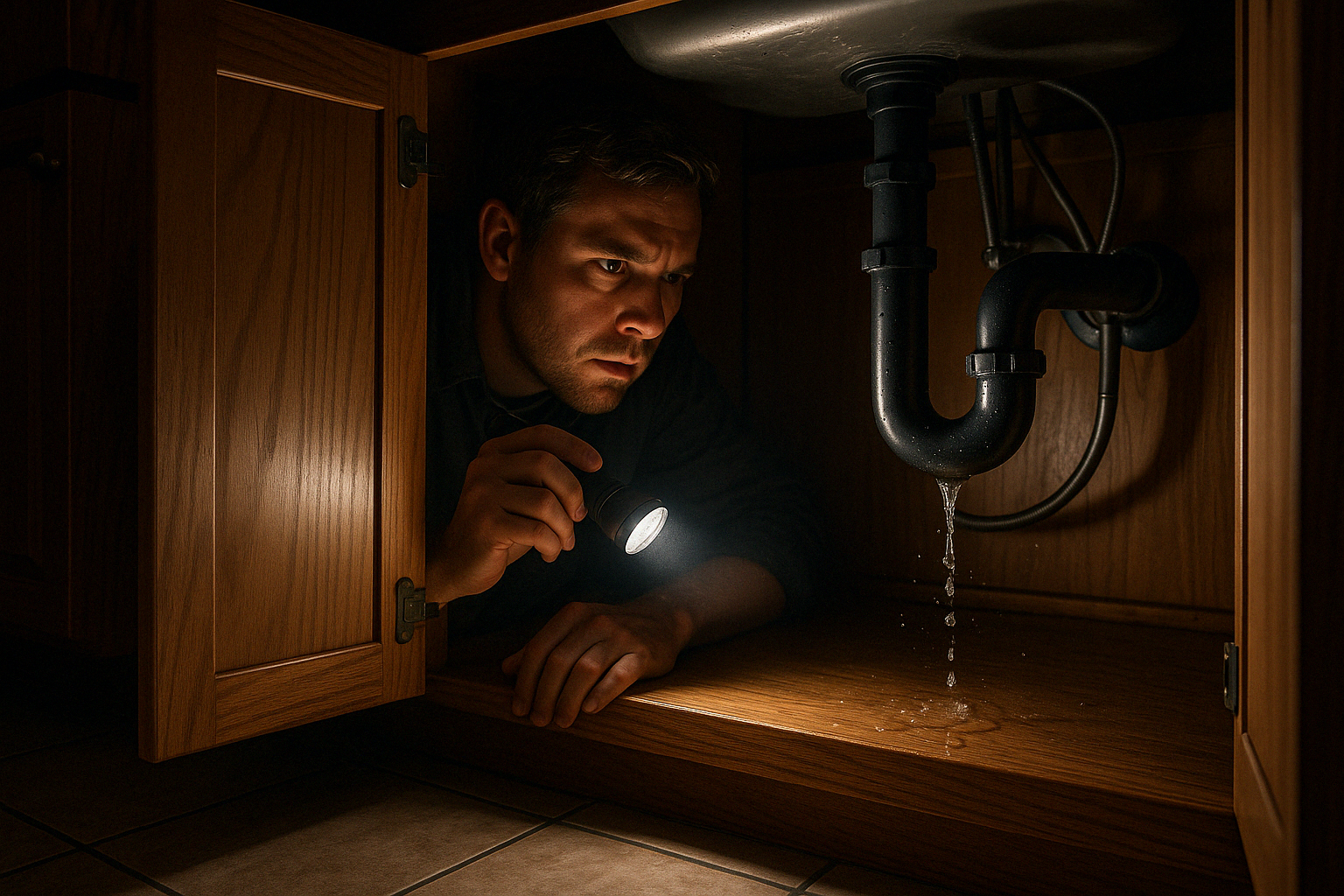
One crucial tip: avoid chemical drain cleaners whenever possible. While they might seem like a quick fix, these harsh products can damage your pipes over time, especially with repeated use. They're also harmful to the environment and can create dangerous conditions if you later need professional drain cleaning. We've had customers in Arvada who needed entire pipe sections replaced because years of chemical drain cleaner use had corroded them beyond repair.
Drain Maintenance Tips for Your Plumbing Maintenance Checklist
Instead of harsh chemicals, try these natural, effective methods that won't harm your plumbing system:
The baking soda and vinegar method works wonders for routine maintenance. Once a month, pour half a cup of baking soda down the drain, followed by half a cup of white vinegar. Cover the drain for about 15 minutes (this keeps the fizzing action working in your pipes rather than bubbling up into your sink), then flush with hot (not boiling) water. This natural reaction helps break down organic buildup without damaging your pipes.
Another simple habit is the weekly hot water flush. Simply run hot water through your drains for 1-2 minutes to help dissolve and move along any forming buildup. It's especially effective after washing dishes or taking showers when there might be soap residue or small food particles in the drain.
For those with garbage disposals, regularly grinding ice cubes and citrus peels can help clean and freshen the unit. The ice helps scrape away buildup on the disposal blades, while citrus oils naturally deodorize. Always remember to run cold water when using your disposal—it helps solidify any grease so it can be chopped up rather than coating your pipes.
If you notice your drains beginning to slow despite regular maintenance, it might indicate a deeper issue in your plumbing system. At Accountable Home Plumbing, our Drain Cleaning Services can address even the most stubborn clogs using methods that won't damage your pipes.
Maintaining clear drains isn't just about preventing clogs—it's about protecting your entire plumbing system, preserving your peace of mind, and avoiding those midnight emergency calls that no homeowner wants to make. A little attention now saves a lot of trouble later!
4. Inspect and Maintain Your Water Heater
That trusty water heater tucked away in your basement or utility closet might not be the most glamorous part of your home, but it certainly deserves some TLC. After all, it's the unsung hero behind your hot showers, clean dishes, and fresh laundry. Adding water heater maintenance to your plumbing maintenance checklist isn't just smart—it's essential for extending your unit's life and keeping those hot showers flowing.
Here in Colorado, our water varies from moderately soft to downright hard depending on where you live. This means sediment builds up faster in some areas than others. For most Denver homes, an annual water heater check-up does the trick, but if you're in an area with particularly hard water, you might want to bump that up to twice a year.
During our service calls, we often hear surprised homeowners say, "I had no idea I needed to maintain my water heater!" Unfortunately, by then, they're usually facing an expensive replacement instead of a simple maintenance visit.
The optimal temperature setting for your water heater is around 120° Fahrenheit. This sweet spot kills harmful bacteria while preventing scalding risks and excessive energy use. Take a moment to check your unit's setting—this small adjustment could improve safety and lower your utility bills.
One of the most crucial safety features on your water heater is the temperature and pressure relief valve (T&P valve). This little component prevents dangerous pressure buildup that could potentially turn your water heater into a rocket. Testing it is simple: just lift the lever and let it snap back. You should hear water flowing and then stopping completely. If it keeps dripping or doesn't release water at all, it's time to call us for a replacement.
Keeping Your Water Heater in Top Shape
The number one maintenance task for traditional tank water heaters is flushing out accumulated sediment. Think of it as giving your water heater a cleansing spa treatment. When sediment builds up at the bottom of the tank, it forces your heater to work harder, wastes energy, and can eventually lead to tank failure.
I'll never forget a call we received from a family in Westminster last winter. Their water heater had completely failed during a cold snap because years of sediment had caused the tank bottom to overheat and crack. What should have been a simple maintenance task turned into an emergency replacement in freezing temperatures.
To flush your water heater safely:
First, turn off the power (flip the breaker for electric models or set the gas valve to "pilot" for gas heaters). Close the cold water inlet valve, attach a garden hose to the drain valve, and run the other end to a drain or outside. Open a hot water faucet somewhere in your home to prevent vacuum formation, then open the drain valve. Let it flow until the water runs clear, which signals you've removed the sediment. Then close everything up and restore normal operation.
For tankless water heaters, maintenance looks a bit different. These units need descaling to remove mineral buildup from the heat exchanger. While some handy homeowners tackle this themselves, the process involves pumping a vinegar solution through the system with a small pump. Many of our customers prefer to leave this specialized task to our technicians.
Watch for warning signs that your water heater needs immediate attention: rusty water coming from hot taps, rumbling or popping noises (that's sediment boiling!), fluctuating water temperatures, or any moisture around the unit. These red flags shouldn't be ignored.
At Accountable Home Plumbing, we've seen how regular maintenance can add years to a water heater's life. One of our Arvada customers has a 15-year-old water heater that's still going strong because they've faithfully maintained it every year. Meanwhile, their neighbor has replaced theirs twice in the same timeframe.
Water heater maintenance isn't just about preventing cold showers—it's about protecting your home investment, ensuring safety, and maximizing efficiency. When you add this simple task to your plumbing maintenance checklist, you're making a small time investment that pays big dividends in reliability and peace of mind.
5. Check for Toilet Leaks and Ensure Proper Functioning
Toilets might not be the most glamorous topic, but they're certainly one of the hardest working fixtures in your home. They're also notorious water wasters when problems go undetected. Would you believe that a single leaking toilet can silently waste up to 200 gallons of water daily? That adds up to a staggering 6,000 gallons per month quietly disappearing—and showing up on your water bill! That's why toilet inspection deserves a prominent spot on your plumbing maintenance checklist.
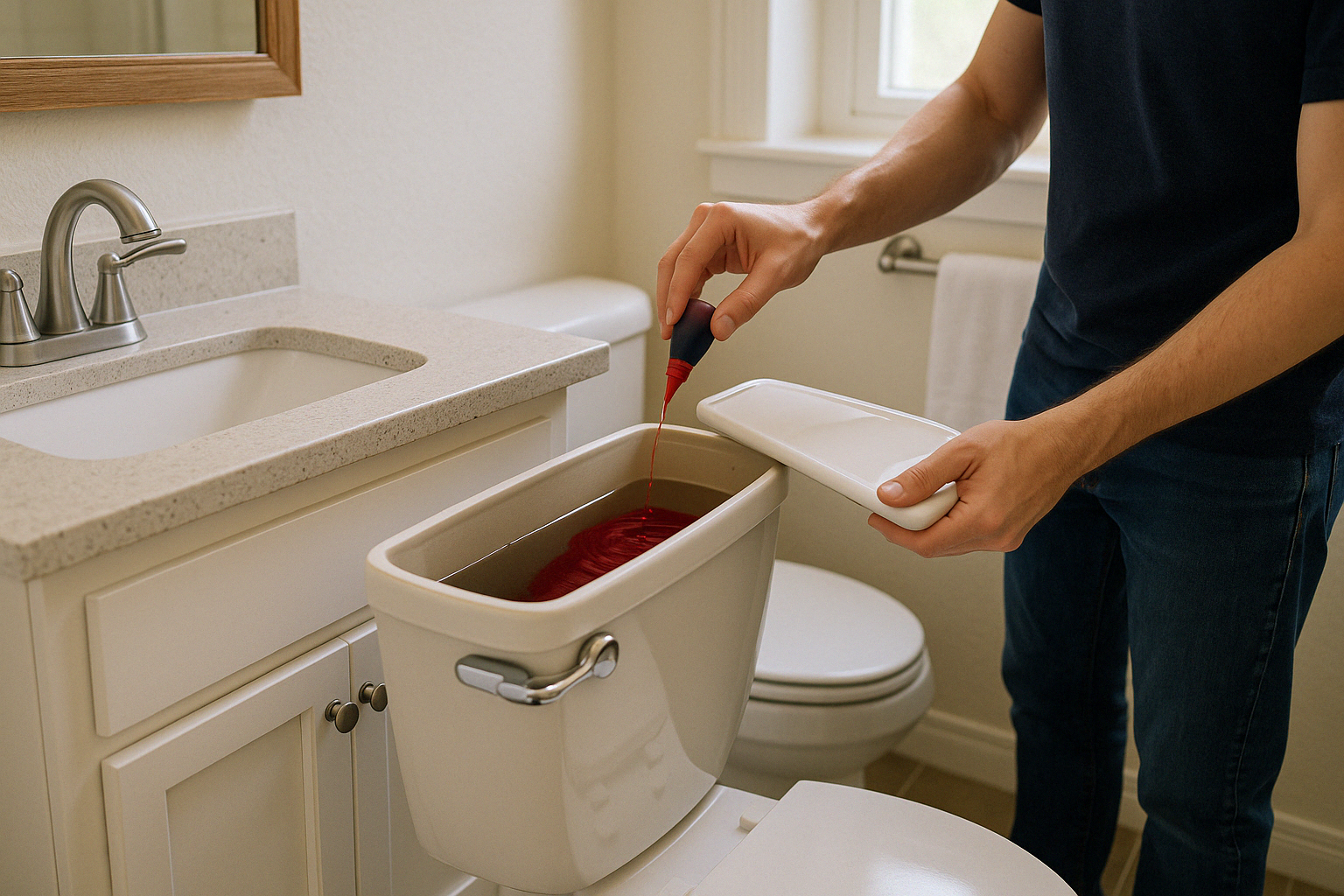
I've seen countless homeowners shocked by unexpectedly high water bills, only to find the culprit was a toilet they thought was working perfectly. The tricky part? Many toilet leaks are completely silent and invisible to the naked eye.
The most common toilet troubles we encounter include running toilets that continue to fill long after flushing (usually caused by a worn flapper valve), mysterious phantom flushes that occur randomly (often from slow tank-to-bowl leaks), and weak flushing that leaves you pressing the handle multiple times (frequently due to clogged jets or chain issues). We also regularly find water around the base, indicating a failed wax ring that needs immediate attention before it causes floor damage.
Perhaps most costly are the constantly running toilets that never shut off completely. These water-wasters can dramatically increase your utility bills while potentially indicating several different internal problems.
As part of your seasonal home maintenance, I recommend checking each toilet quarterly—especially those in guest bathrooms or less-used areas where problems might linger unnoticed for months.
Performing the Toilet Leak Test
The food coloring test is my favorite DIY method for detecting those sneaky silent leaks, and it couldn't be simpler:
- Remove your toilet tank lid
- Add 10-15 drops of food coloring to the tank water
- Wait 30 minutes without flushing
- Check the bowl—if you see colored water there, you've confirmed a leak
- Flush immediately afterward to prevent any staining
If color appears in the bowl, don't panic! The most common culprit is the flapper valve—an inexpensive rubber part that's relatively easy to replace. Many homeowners feel comfortable handling this repair themselves, but if you'd rather leave it to the professionals, our Accountable Home Plumbing technicians can quickly diagnose and fix the issue without breaking the bank.
Beyond leak detection, proper toilet care should include checking for stability (a rocking toilet often signals floor damage underneath), inspecting tank components for wear, and cleaning mineral deposits from the jets and siphon. One tip I always share with customers: avoid those convenient in-tank cleaning tablets containing bleach—they might seem helpful, but they often damage rubber components and lead to leaks.
I remember visiting a family in Broomfield who couldn't figure out why their water bill had suddenly tripled. Our inspection revealed two silently leaking toilets that had been wasting water for months without anyone noticing. After some simple repairs that took less than an hour, their water usage returned to normal, saving them hundreds of dollars annually.
Consider this: toilets typically account for about 30% of indoor water use in the average home. Keeping them in proper working order isn't just about preventing inconvenient breakdowns—it's about conservation and controlling your utility costs. Adding toilet maintenance to your plumbing maintenance checklist is one of the simplest ways to prevent water waste and unexpected expenses.
6. Examine Exposed Pipes and Insulate Them
When was the last time you took a peek at the exposed pipes in your home? Those visible pipes running through your basement, crawl spaces, or under your sinks are the unsung heroes of your plumbing system - and they need your attention. Including a thorough inspection of these pipes in your plumbing maintenance checklist can prevent costly disasters down the road.
During my years serving homeowners across Denver, I've seen how neglected pipes can lead to unexpected problems. Take a moment during your maintenance routine to look for telltale signs of trouble: discoloration or flaking that indicates corrosion, moisture or water stains around connections that signal small leaks, dents or cracks from physical damage, and even sagging sections that create stress points where future leaks might develop.
Living in Colorado means our pipes face a special challenge - those dramatic temperature swings! One day it's 70°F, and the next we're dealing with below-freezing temperatures. These fluctuations put enormous stress on your plumbing system, especially on pipes in unheated spaces.
I'll never forget the frantic call from a Westminster homeowner who returned from vacation to find their entire basement flooded. The culprit? Uninsulated pipes in their crawl space that froze and burst during a cold snap. The repair bill topped $15,000 - all preventable with some simple pipe insulation that would have cost less than $50.
Insulating Pipes: An Essential Part of Your Plumbing Maintenance
Think of pipe insulation as a cozy jacket for your plumbing - it's one of the smartest, most cost-effective improvements you can make to your home. Beyond just preventing freezing, properly insulated pipes deliver several benefits that improve your daily life.
Your hot water pipes lose less heat when they're wrapped in insulation, which means more efficient energy use and lower utility bills. Cold water pipes won't "sweat" with condensation that can damage surrounding materials. As a bonus, insulation even reduces that annoying rushing water sound that might wake light sleepers when someone uses the bathroom at night.
Getting started with pipe insulation is simpler than you might think. First, measure your pipes' diameter so you can purchase the right size insulation. Foam tube insulation (those hollow pool-noodle-looking sleeves) works great for most homeowners and is available at any hardware store. Cut the insulation to the right length, slip it over your pipes, and secure it with tape or zip ties. Pay special attention to corners and joints - these connection points are particularly vulnerable.
Focus your insulation efforts where they matter most: pipes in unheated areas like garages and attics, pipes along exterior walls that get cold in winter, and hot water pipes throughout the house for better energy efficiency. Don't forget about pipes in areas that have frozen before - they're likely to freeze again without proper protection.
When those Colorado cold snaps hit, take extra precautions with your plumbing. Keep cabinet doors open under sinks to allow warm air circulation. Let faucets drip slightly during extreme cold to relieve pressure. And even if you're headed to the mountains for the weekend, maintain a consistent temperature in your home - your pipes will thank you.
Pipe maintenance isn't just a winter concern - it's a year-round strategy for improving your plumbing system's efficiency and extending its lifespan. At Accountable Home Plumbing, we recommend adding pipe inspection and insulation assessment to your seasonal plumbing maintenance checklist, particularly before winter arrives. A little attention now can prevent major headaches (and expenses) later.
7. Test Sump Pump Functionality
If your home has a basement or sits in an area with a high water table, your sump pump is your first line of defense against flooding and water damage. Making sure this critical equipment works properly should be a top priority on your plumbing maintenance checklist.
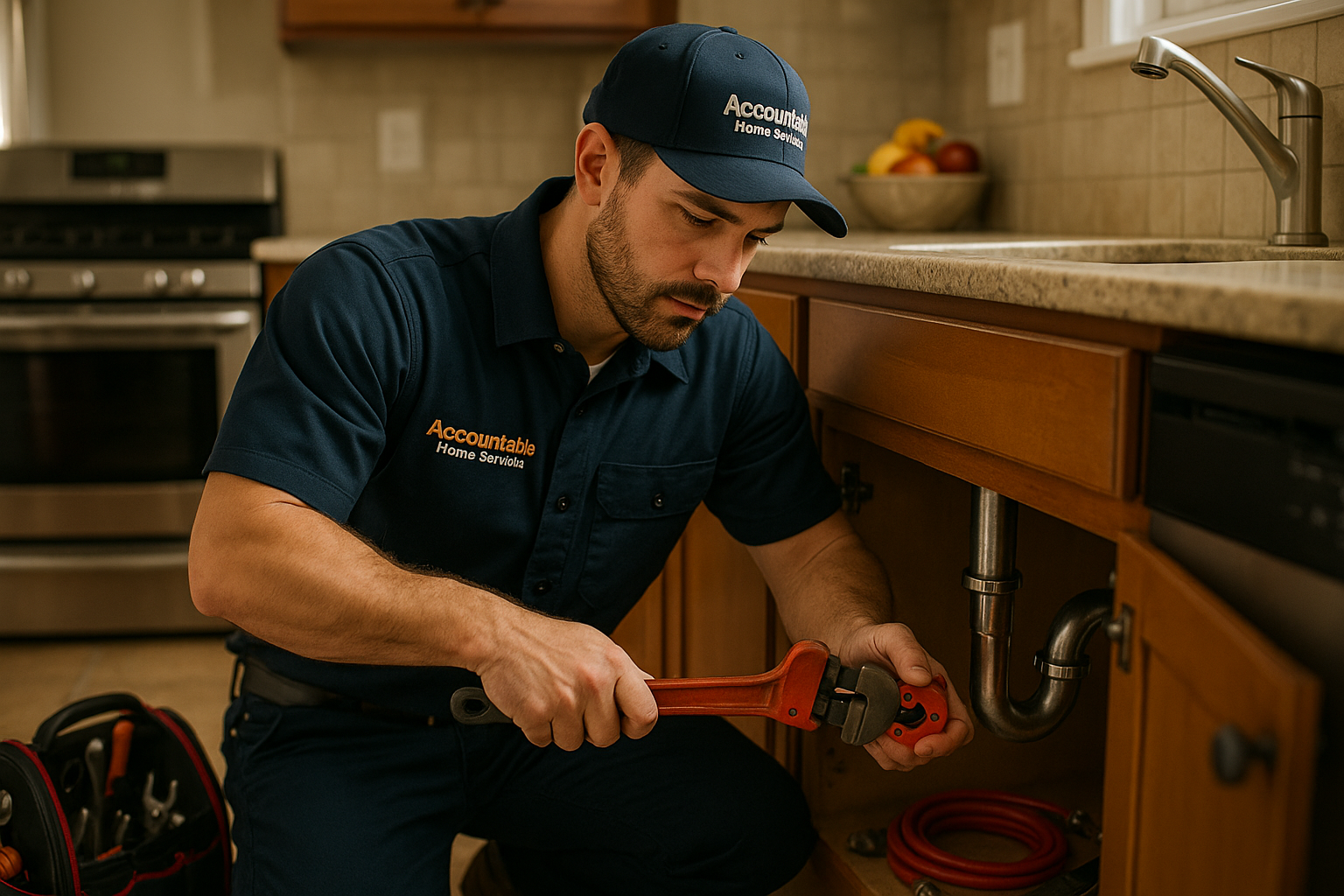
I've seen the heartbreak that happens when sump pumps fail at the worst possible moment. Just last year, one of our Thornton customers returned from vacation to find their beautifully finished basement under 6 inches of water after their sump pump gave out during a spring storm. The damage totaled thousands of dollars—all preventable with regular testing.
Here in Colorado, our weather patterns make sump pump maintenance particularly important. Those sudden summer thunderstorms can dump inches of rain in just hours, and spring snowmelt can saturate the ground around your foundation. Both scenarios put your sump pump to the test, and if it's not up to the job, your basement pays the price.
We recommend testing your sump pump at least every three months, and even more frequently during our rainy seasons or periods of heavy snowmelt. The testing process is simple enough for any homeowner to handle in about 10 minutes.
How to Test Your Sump Pump
Testing your sump pump is actually pretty straightforward. First, locate your sump pit in your basement or crawl space—it's that basin where groundwater collects. Make sure the pump is plugged into a GFCI outlet with the cord securely connected.
The actual test is as simple as pouring about 5 gallons of water into the sump pit. This should be enough to raise the float and activate the pump. When you do this, watch carefully as the pump should turn on automatically, drain the water efficiently, and then shut off when the job is done. While it's running, go outside and check the discharge pipe to confirm water is properly flowing away from your house.
During this test, listen for any unusual noises like grinding or rattling—these could signal mechanical problems that need attention. Also watch for any delayed activation which might indicate issues with the float switch. The pump shouldn't be turning on and off rapidly (what we call short cycling), and it should remove virtually all water from the pit before shutting off.
Beyond just testing the pump's operation, take a few minutes to clean any debris from the pit that could interfere with the float or pump. Inspect the check valve to make sure water isn't flowing back into the pit after the pump shuts off. If you have a battery backup system (which I strongly recommend for homes with finished basements), test that too.
Don't forget to verify that your pump discharges water at least 10 feet from your foundation and that the outlet isn't blocked by leaves, dirt, or other debris. In Colorado's freeze-thaw cycles, outdoor discharge pipes can sometimes become blocked with ice during winter months.
If your sump pump is getting up there in years (7-10 years old), or if you notice any issues during testing, consider proactive replacement. I always tell my customers that the $300-500 cost of a new sump pump is nothing compared to the thousands in potential damage from a flooded basement.
At Accountable Home Plumbing, we see a lot of preventable water damage across Denver, Westminster, and the surrounding areas. Our Sump Pump & Water Control Services include everything from routine maintenance to emergency replacements and backup system installations. We can help you select the right system for your specific needs and make sure it's properly installed for years of reliable protection.
Your sump pump is like insurance—you hope you never need it, but when you do, you'll be incredibly grateful you kept it in good working order.
8. Clean and Inspect Gutters and Downspouts
While gutters and downspouts might not seem like part of your plumbing system, they play a crucial role in directing water away from your home's foundation and preventing water-related problems. Including them in your plumbing maintenance checklist helps protect your home's structural integrity and plumbing.
You know that feeling when you're cozied up inside during a heavy rainstorm, feeling secure and dry? That comfort largely depends on your gutter system doing its job properly. When gutters fail, the consequences can quickly cascade into serious problems.
Clogged or damaged gutters can turn a normal rainfall into a homeowner's nightmare. Water that can't flow properly through gutters often ends up seeping into your foundation, potentially flooding basements or crawl spaces. Over time, this moisture can compromise your foundation's integrity, leading to expensive structural repairs.
Here in Colorado, where we experience everything from spring downpours to heavy winter snow, your gutter system works overtime. Fall brings beautiful changing leaves—that unfortunately end up clogging gutters. Winter snow and ice can create damaging ice dams if gutters aren't properly maintained.
The Role of Gutters in Your Plumbing Maintenance Checklist
Think of your gutter system as the first line of defense in your home's water management strategy. When functioning properly, gutters collect rainwater from your roof and channel it through downspouts away from your foundation—protecting your home from water damage.
Seasonal cleaning is essential for keeping this system working. Twice yearly—typically in late spring after seed pods have fallen and late fall after the leaves have dropped—take time to clear debris from your gutters. For homes surrounded by pine trees or other heavy debris-producers, you might need more frequent cleanings.
After removing leaves and debris, flush your gutters with water from a garden hose. This not only cleans remaining sediment but also helps you identify any leaks or improper drainage. Water should flow freely toward and through the downspouts. If you notice standing water, your gutters might not have the proper slope (ideally about ¼ inch per 10 feet toward downspouts).
Downspout maintenance is equally important. Check that they're securely attached to the gutters and that they extend far enough away from your foundation—at least 5-10 feet is ideal. Many water-in-basement issues we see at Accountable Home Plumbing stem from downspouts that dump water too close to the foundation.
I remember helping a family in Northglenn who had battled persistent basement dampness for months. Despite multiple "fixes," the problem continued until we traced it to downspouts that were discharging water just inches from their foundation. Once we extended those downspouts and directed water away from the house, their basement finally stayed dry.
Regular inspection should include looking for signs of damage or wear. Check for rusting or corrosion on metal gutters, sagging sections that might collect water, and secure attachment points to your fascia board. Pay special attention to seams and corners, as these are common leak points.
For homes in heavily wooded areas like parts of Boulder or Arvada, consider investing in gutter guards. While not maintenance-free (you'll still need periodic cleaning), they can significantly reduce debris buildup and extend the time between cleanings.
Your home's drainage system works as a unified whole. Problems with gutters can eventually become problems with your foundation, basement, and even your main plumbing system. By keeping gutters and downspouts on your plumbing maintenance checklist, you're protecting your entire home from water damage.
At Accountable Home Plumbing, we've seen how seemingly small issues with exterior water management can lead to significant plumbing emergencies. Taking the time to maintain your gutters now can save you from dealing with water damage repairs later—and that's something worth climbing a ladder for twice a year.
9. Schedule Regular Professional Plumbing Inspections
While DIY maintenance is valuable, nothing replaces the expertise of a professional plumber for thorough system evaluation. Regular professional inspections should be a cornerstone of your plumbing maintenance checklist.
At Accountable Home Plumbing, we've seen how regular professional inspections can save homeowners thousands in potential damage. We typically recommend a comprehensive professional inspection every 1-2 years for most homes. If you have an older home or have experienced recurring plumbing issues in the past, you might want to schedule these check-ups more frequently.
Think of these inspections like your annual physical—they catch small issues before they become serious health problems. Our experienced technicians bring trained eyes and specialized equipment to spot potential problems that might escape even the most diligent homeowner's attention.
When our team conducts a professional inspection, we don't just glance at your visible pipes. We perform comprehensive leak detection using specialized equipment that can find hidden moisture in walls, floors, and underground pipes. We also conduct precise water pressure testing to ensure your system is operating within safe parameters.
One of our most valuable services is drain and sewer line inspection, often using video camera technology to literally see inside your pipes. This allows us to identify blockages, root intrusion, or pipe damage before a complete backup occurs. We've saved many Denver homeowners from sewer disasters by catching these issues early.
Your water heater evaluation goes beyond the basic maintenance you might do yourself. Our technicians assess all components, including those not easily accessible to homeowners, and can spot potential failure signs before you're stuck taking cold showers.
We also thoroughly examine all fixtures in your home, testing faucets, toilets, and appliance connections for proper function and efficiency. Our pipe inspection looks for corrosion, improper installation, or potential failure points throughout your system.
The Benefits of Regular Plumbing Check-Ups
The peace of mind that comes from professional inspections is invaluable. Just ask the Denver family who avoided a potential $20,000 sewer line collapse because we identified minor root intrusion during a routine inspection. What could have been a major disaster with extensive property damage became a simple, targeted repair.
Professional inspections help prevent emergencies by catching issues while they're still minor. Many plumbing catastrophes don't happen suddenly—they develop gradually over time before the dramatic pipe burst or backup occurs.
While there's a cost for professional inspection, it's typically far less than emergency repairs or water damage restoration. The money you save by avoiding just one major plumbing emergency will likely pay for years of preventive inspections.
Regular maintenance and timely repairs help extend your system's lifespan, delaying the need for major replacements. Your plumbing system represents a significant investment in your home, and professional care helps protect that investment.
Professional inspections can also identify inefficiencies in your system. Our technicians can recommend upgrades or adjustments that improve efficiency, saving water and reducing utility bills over time.
One Longmont family we've served for over a decade schedules their annual inspection like clockwork. During that time, we've helped them address minor issues before they became serious, guided their fixture upgrade decisions, and maintained a reliable, efficient plumbing system despite their home being over 75 years old.
At Accountable Home Plumbing, our inspection services cover the entire Denver metro area, including Broomfield, Westminster, Thornton, Northglenn, Arvada, Boulder, Denver, and Longmont. After each inspection, we provide detailed reports of our findings, clear explanations of any issues found, and transparent recommendations for addressing them.
Professional plumbing inspections don't replace your regular DIY maintenance—they complement it. By combining your own vigilance with periodic expert evaluation, you create the most comprehensive protection for your home's plumbing system and the peace of mind that comes with it.
For emergency repairs or to schedule your professional plumbing inspection, contact us today.
Frequently Asked Questions about Plumbing Maintenance Checklists
How often should plumbing inspections be conducted?
When homeowners ask me about inspection frequency, I always tell them it depends on a few key factors - mainly your home's age and your plumbing's current condition. Think of your plumbing system like your car - newer models need less attention than vintage ones!
For newer homes under 10 years old, a professional inspection every two years usually works well, with some seasonal DIY checks in between. You know, just giving things a once-over each season to make sure everything's flowing smoothly.
If your home is in the 10-50 year range (like many in the Denver area), I recommend bumping that up to annual professional inspections. These middle-aged plumbing systems benefit from more regular expert eyes, plus your own quarterly DIY inspections.
For those beautiful historic Denver homes over 50 years old, it's worth considering twice-yearly professional inspections. These older systems often have quirks and materials that need more frequent monitoring.
Here in Colorado, our distinct seasons create natural inspection points for your plumbing maintenance checklist in 2025. Spring checks help identify any winter damage (those freeze-thaw cycles can be rough!), while fall inspections prepare your system for our cold winters. And of course, after any major weather event, it's always smart to check things out.
Between professional visits, keep an eye on your system monthly. A quick look under sinks, checking water pressure, and noting any changes in how fixtures perform can catch problems before they become disasters.
What are common signs of plumbing issues homeowners should look for?
Your home has ways of telling you when plumbing problems are brewing - if you know what to look for! I've seen countless situations where homeowners could have avoided major headaches by recognizing these early warning signs.
Water bill surprises might be your first clue. If your usage hasn't changed but your bill has jumped, something's likely leaking somewhere. Similarly, water stains on walls, ceilings, or floors are never normal and always worth investigating immediately.
Pay attention to water pressure changes too. A sudden drop might indicate a leak, while unusually high pressure can damage fixtures and pipes over time. And discolored water is definitely telling you something - brown or rusty water often signals pipe corrosion.
Your drains communicate problems through slow drainage or gurgling sounds. These symptoms typically mean a blockage is forming somewhere in your system. And trust me, that foul smell coming from drains isn't something to ignore - it often indicates a clog or sewer issue.
Toilet troubles like continuous running or incomplete flushes waste water and usually signal worn internal components. And if you hear water running when everything's turned off, that's a clear sign of a leak somewhere in your system.
For visible pipes, look for corrosion, moisture, or frost. Even small changes can indicate developing problems. And any visible leak, no matter how minor, deserves immediate attention.
I remember a Thornton family who noticed a small ceiling stain but figured it wasn't urgent. By the time they called us in early 2025, that tiny leak had caused extensive structural damage that could have been prevented with an early call. The small service fee for checking out that stain would have saved them thousands in repairs!
How can regular plumbing maintenance prevent costly repairs?
I like to tell my customers that plumbing maintenance isn't an expense - it's an investment with incredible returns. Your plumbing maintenance checklist is essentially a money-saving strategy in disguise.
Early detection is your biggest financial advantage. Finding and fixing a small pinhole leak might cost you $150 today, but that same leak left unattended could cause $5,000 in water damage next month. I've seen it happen countless times in homes across Denver and the surrounding areas.
Regular maintenance dramatically extends the lifespan of your plumbing components. A water heater that's flushed annually might serve you faithfully for 15+ years, while a neglected one often fails before its 10th birthday. When you consider that a new water heater installation runs $1,000-2,000 in 2025, those annual maintenance visits start looking like a bargain!
The most expensive plumbing-related costs actually aren't plumbing repairs at all - they're water damage restoration. Drying out structures, replacing drywall, and dealing with mold remediation can easily run into tens of thousands of dollars. Your regular maintenance routine is your best defense against these budget-busting disasters.
There's also the matter of efficiency. Well-maintained systems simply use less water and energy. Those savings might seem small month to month, but they add up significantly over years of homeownership.
And let's talk about the emergency service premium. When you need a plumber at 2 AM on a Sunday, you'll typically pay 1.5 to 2 times more than for a scheduled visit. Regular maintenance dramatically reduces those middle-of-the-night emergencies.
I'll never forget a Westminster family who followed our maintenance recommendations religiously. During a routine inspection in January 2025, we found early signs of root intrusion in their sewer line. The cost to address it was just a few hundred dollars. Had they skipped that inspection, those roots would have completely blocked or broken their sewer line within months - a repair that typically costs $15,000-30,000.
Benjamin Franklin wasn't a plumber, but he certainly understood plumbing economics when he said, "An ounce of prevention is worth a pound of cure." When it comes to your home's plumbing system, that pound of cure often comes with a very hefty price tag!
Conclusion
When you think about it, your home's plumbing system is like the circulatory system of your house – it's essential, complex, and when it works well, you hardly notice it. That's exactly why having a comprehensive plumbing maintenance checklist is one of the smartest investments you can make as a homeowner in 2025.
Throughout this guide, we've walked through nine critical steps that help protect your home from unexpected plumbing disasters. From hunting down sneaky leaks to scheduling professional inspections, each step plays a vital role in keeping your pipes flowing smoothly and your water bill reasonable.
Did you know your home's plumbing system represents about 15% of your property's total value? That's a significant chunk of your investment that deserves regular attention. By following a consistent maintenance routine, you're not just avoiding costly emergency repairs – you're actually extending the life of your entire plumbing system.
Here at Accountable Home Plumbing, we've seen how a little preventative care goes a long way. One of our Westminster customers saved over $30,000 on a potential sewer line replacement simply because they caught a minor root intrusion during a routine inspection in early 2025. That's the power of maintenance!
Water damage restoration is among the most expensive home repairs you might face – often running into thousands of dollars. Regular maintenance dramatically reduces this risk while keeping your system running efficiently. It's like getting your car's oil changed – a small, regular investment prevents a blown engine down the road.
We're proud to serve homeowners throughout the Denver metro area with honest, reliable plumbing services. Whether you're in a historic Boulder bungalow or a new construction in Thornton, our team brings the same level of care and expertise to every home we visit. Our transparent pricing means no surprises, and our 24/7 emergency services provide peace of mind when unexpected issues do arise.
Don't wait for that dreaded middle-of-the-night emergency call to think about your plumbing. Take proactive steps today by implementing your own plumbing maintenance checklist. Your future self (and wallet) will thank you!
Ready to get started with professional help? Contact Accountable Home Plumbing today to schedule your comprehensive plumbing inspection or to learn more about our maintenance services. We'd be happy to help customize a maintenance plan specifically for your home's needs.
As Benjamin Franklin wisely noted, "An ounce of prevention is worth a pound of cure." When it comes to your home's plumbing, those are words to live by. Make your plumbing maintenance checklist a priority today, and enjoy the peace of mind that comes with a well-maintained home.
